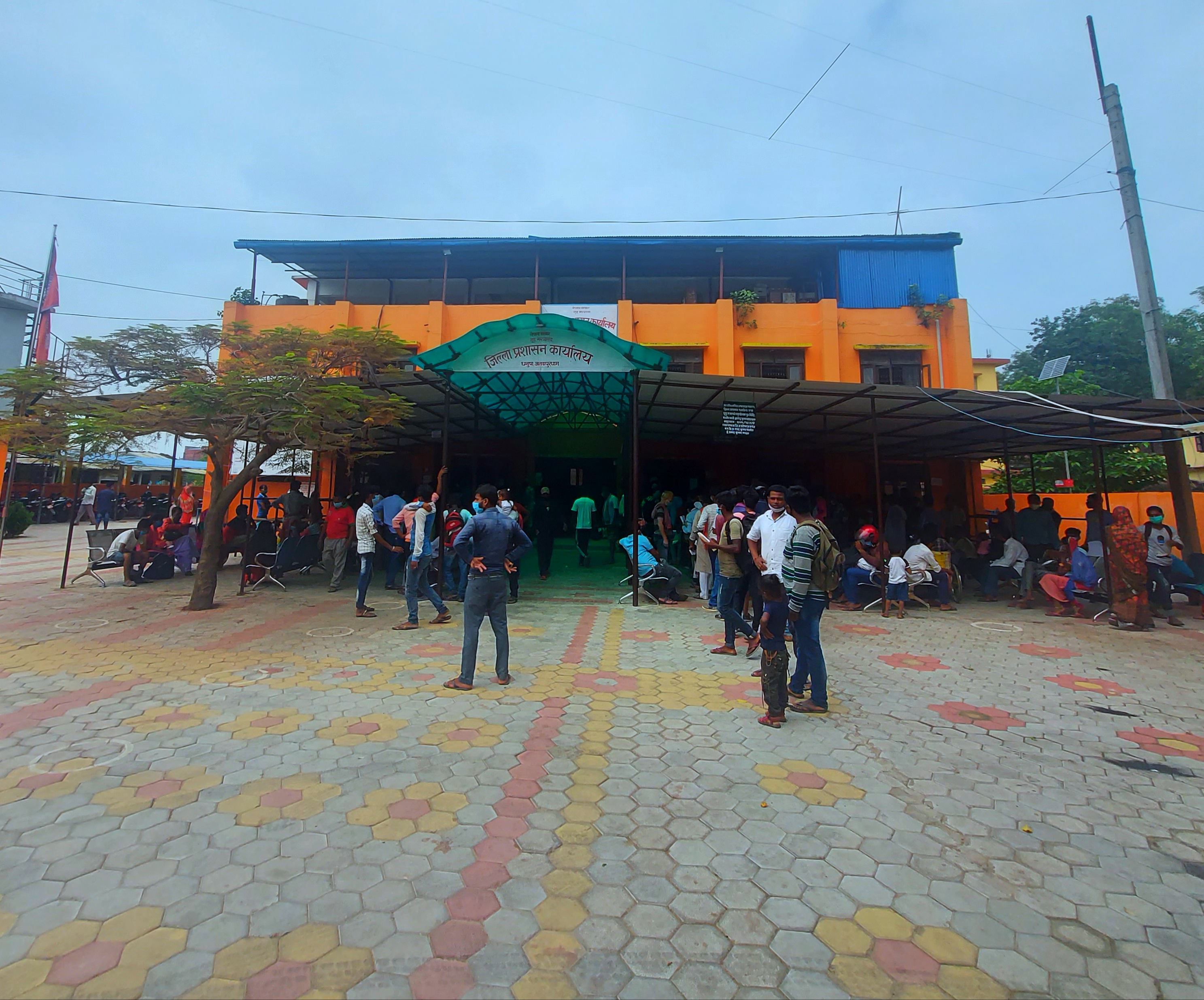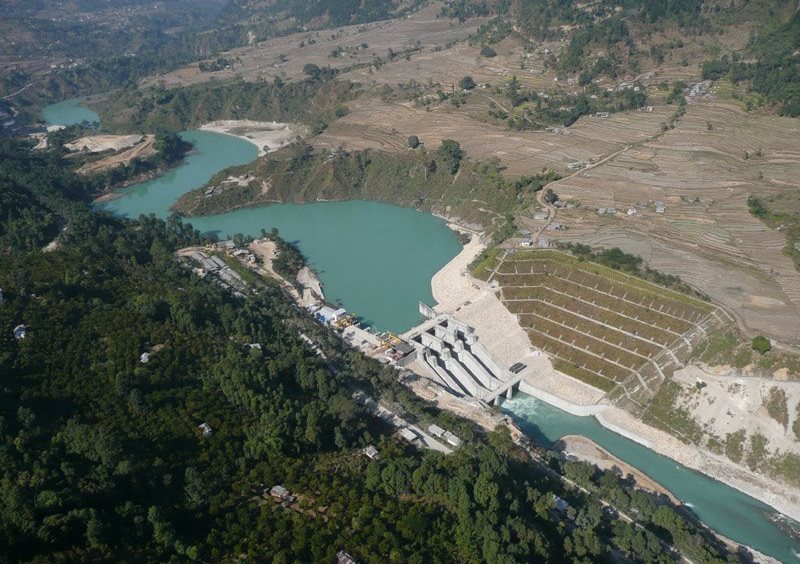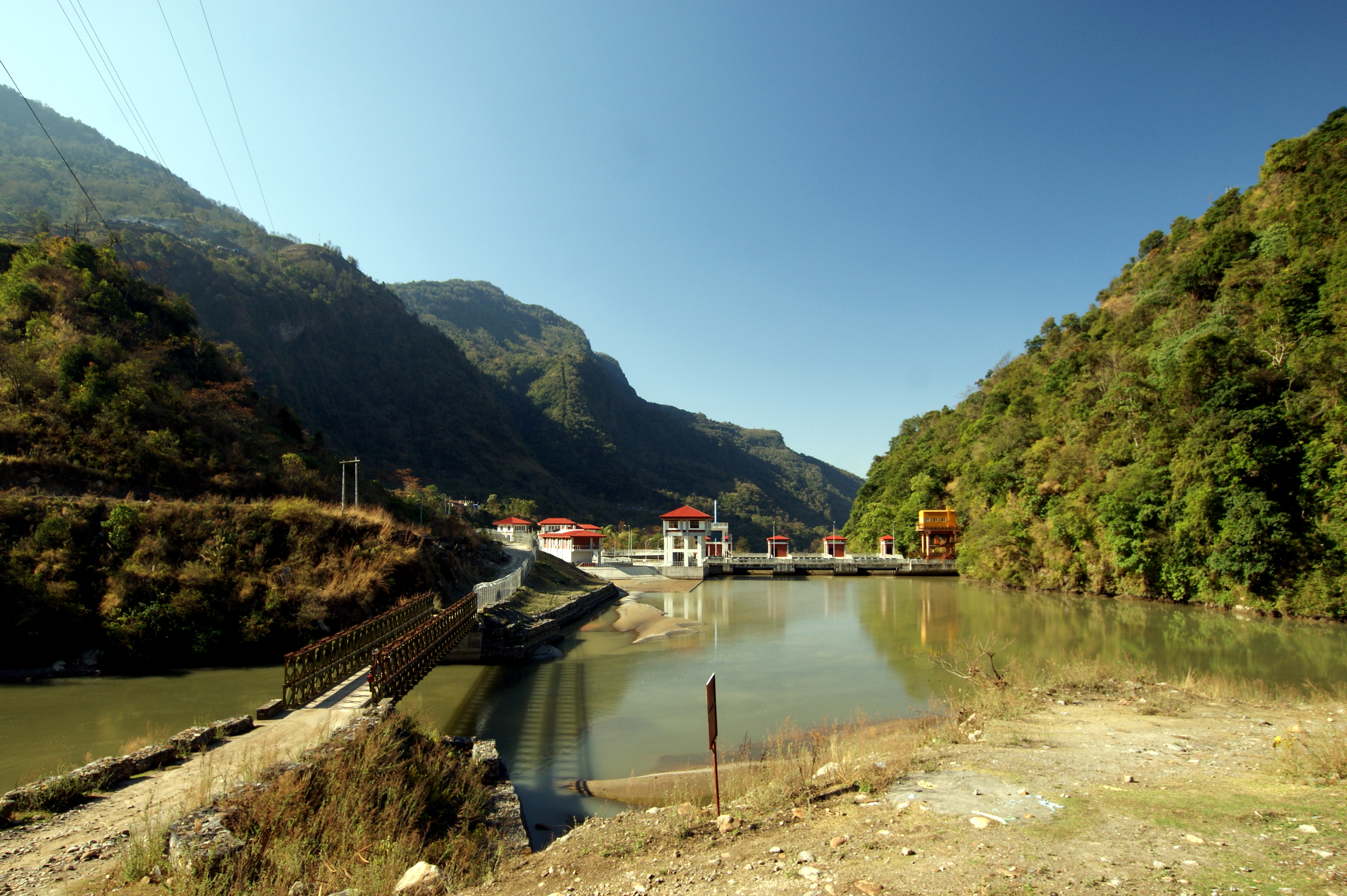|
Mithila 2 Solar PV Station
Mithila 2 Solar PV Station is a 10 MW solar power plant located at Dhanusha District, Madesh Province; Nepal. The plant is owned and under construction by Eco Global Power Development Pvt. Ltd., an IPP. The plant is planned to come in operation in February 2024. The station occupies an area of about 35 Bighas of land (approx. 26.5 hector). The station has 28,504 solar panels, and three inverters to convert 690 DC to AC. The energy so generated by the project will be connected to the Dhalkebar Substation, which is about 1 Km from the plant. The generated electricity is planned to sell to Nepal Electricity Authority through PPA connecting to National Power Grid System. See also * List of power stations in Nepal *Butwal Solar PV Project *Nuwakot Solar Power Station Nuwakot Solar Power Station is located at Nuwakot District of Nepal. It is the largest solar power plant of Nepal. The plant is owned by Nepal Electricity Authority (NEA). The solar panels are installed in six loca ... [...More Info...] [...Related Items...] OR: [Wikipedia] [Google] [Baidu] |
Nepal
Nepal (; ne, नेपाल ), formerly the Federal Democratic Republic of Nepal ( ne, सङ्घीय लोकतान्त्रिक गणतन्त्र नेपाल ), is a landlocked country in South Asia. It is mainly situated in the Himalayas, but also includes parts of the Indo-Gangetic Plain, bordering the Tibet Autonomous Region of China to the north, and India in the south, east, and west, while it is narrowly separated from Bangladesh by the Siliguri Corridor, and from Bhutan by the Indian state of Sikkim. Nepal has a diverse geography, including fertile plains, subalpine forested hills, and eight of the world's ten tallest mountains, including Mount Everest, the highest point on Earth. Nepal is a multi-ethnic, multi-lingual, multi-religious and multi-cultural state, with Nepali as the official language. Kathmandu is the nation's capital and the largest city. The name "Nepal" is first recorded in texts from the Vedic period of the India ... [...More Info...] [...Related Items...] OR: [Wikipedia] [Google] [Baidu] |
Begadawar
Bengadawar was a village development committee of the Dhanusa District in the Janakpur Zone of Nepal. At the time of the 1991 Nepal census The 1991 Nepal census was a widespread national census conducted by the Nepal Central Bureau of Statistics. Working with Nepal's Village Development Committees at a district level, they recorded data from all the main towns and villages of each ... it had a population of 8,145 and had 1543 houses. References External linksUN map of the municipalities of Dhanusa District Populated places in Dhanusha District {{Dhanusa-geo-stub ... [...More Info...] [...Related Items...] OR: [Wikipedia] [Google] [Baidu] |
Dhanusha District
Dhanusha District, (; ), a part of Madhesh Province, is one of the seventy-seven districts of Nepal. It is situated in the Outer Terai. The district, with Janakpurdham as its district headquarter, covers an area of and has a population (2021) of 8,38,084. During the elections in April 2008, the district was divided into seven constituencies. It is also the home district of the first president of Nepal, Dr. Ram Baran Yadav, who contested and won the elections from constituency 5. As a political center of the region, it has prominent leaders like Bimalendra Nidhi (Former Deputy Prime Minister of Nepal), Anand Prasad Dhungana, Mahendra Yadav and Ram Krishna Yadav from the Nepali Congress, Anand Yadav (Gangaram Yadav ) from the CPN-UML, Matrika Yadav from the CPN-Maoist and Ram Chandra Jha from CPN (Unified Socialist) who have been ministers at various point of time and are still active. The most common language spoken in Dhanusha is Maithili. Dhanusha district has an air ... [...More Info...] [...Related Items...] OR: [Wikipedia] [Google] [Baidu] |
Madhesh Province
Madhesh Province ( Nepali/ mai, मधेश प्रदेश) is a province of Nepal that was formed after the adoption of the Constitution of Nepal. It is Nepal's most populous province, and smallest province by area. It borders Province No. 1 to the east, Bagmati Province to the north, and India’s Bihar state to the south. It has an area of -about 6.5% of the country's total area. It has a population of 6,126,288 as per the 2021 Nepal census, making it the most populated province of Nepal. The Koshi River and Koshi Tappu Wildlife Reserve acts as provincial demarcation border between Madhesh Province and Province No.1 in the east. And the demarcation line between Chitwan National Park and Parsa National Park (previously Wildlife Reserve) acts as provincial demarcation border between Madhesh Province and Bagmati Province in the west. The province includes eight districts from Saptari District in the east to Parsa District in the west. The majority of the province's po ... [...More Info...] [...Related Items...] OR: [Wikipedia] [Google] [Baidu] |
Independent Power Producers Association
The Independent Power Producers Association Nepal (IPPAN) (स्वतन्त्र उर्जा उत्पादकहरुको संस्था, नेपाल)is an association of private developers and owners of power producers of Nepal. It is a non-profit, non-government autonomous organization and was established in 2001. Its main objective is to link the private sector and government organizations involved in hydropower generation. IPPAN is primarily a membership organization. The General Assembly comprises both institutional and individual members. The General Assembly elects the Board of Directors, which then formulates the plans and policies of the organization. As of 2020, there are 580 private hydropower projects that are in operation or under construction with a total capacity to generate 21,000 MW. The private sector has invested about NPR 600 billion in these projects. Objectives The Independent Power Producers (IPPs) generate electricity and sell to Nep ... [...More Info...] [...Related Items...] OR: [Wikipedia] [Google] [Baidu] |
Bigha
The bigha (also formerly beegah) is a traditional unit of measurement of area of a land, commonly used in India (including Uttarakhand, Haryana, Himachal Pradesh, Punjab, Madhya Pradesh, Uttar Pradesh, Bihar, Jharkhand, West Bengal, Assam, Gujarat and Rajasthan but not in southern states of India), Bangladesh and Nepal. There is no "standard" size of bigha. The size of a ''bigha'' varies considerably from place to place. The size of Bigha is different in different areas.Haryana jamabandi Units of measurements , . Sources have given measurements ranging from , but in several smaller pockets, it can be as high as . Its sub-unit is Biswa (or Bisa) or Katha (or Katta) in many regions. Again there i ... [...More Info...] [...Related Items...] OR: [Wikipedia] [Google] [Baidu] |
Nepal Electricity Authority
Nepal Electricity Authority (NEA), founded on 16 August 1985, is the parent generator and distributor of electric power under the supervision of the government of Nepal Nepal (; ne, नेपाल ), formerly the Federal Democratic Republic of Nepal ( ne, सङ्घीय लोकतान्त्रिक गणतन्त्र नेपाल ), is a landlocked country in South Asia. It is mai .... NEA owns Hydroelectric Plants connected to the grid amounting to 480 Megawatts. It also buys power from Independent Power Producers (IPP) amounting to 230 Megawatts. It operates two fuel operated plants generating 53 Megawatts of Electricity. The total capacity of the Integrated Nepal Power System (INPS) which NEA operates stands at 1095 Megawatts. Various projects are underway to help meet the electricity demand but these have been plagued by delays. However after many such delays Nepal has seen a positive change in electricity production and distribution. For the ... [...More Info...] [...Related Items...] OR: [Wikipedia] [Google] [Baidu] |
List Of Power Stations In Nepal
The following is a list of the power stations in Nepal. Hydroelectric Solar Power Stations Diesel Power Stations Hydropower stations under construction Other Power Stations * Solar power stations ** Simikot 50 kW ** Gamgadhi 50 kW ** Dhobighat Oxidaizing Pond 680.4 kW, Owner:KUKL, Dedicated 11 kV feeder connecting to Teku Substation * 10 other small hydropower stations (total: 2460 * 29 small isolated hydropower stations (total: 5.676 MW) Upcoming Hydro-power Projects in Nepal Source: Bidhyut Magazine/Semi- Annual Report – NEA, Bhadra 2063; NEA Annual Report 2073 B.S. See also *List of largest power stations in the world *List of dams and reservoirs in Nepal References {{DEFAULTSORT:Power stations in Nepal Nepal Economy of Nepal-related lists Energy in Nepal * Power stations A power station, also referred to as a power plant and sometimes generating station or generating plant, is an industrial facility for the generation of ... [...More Info...] [...Related Items...] OR: [Wikipedia] [Google] [Baidu] |
Butwal Solar PV Project
Butwal Solar PV Project is located at Rupandehi District of Lumbini Province, Nepal. The plant is owned and run by Ridi Hydropower Development Company Ltd, an IPP. The plant came in operation in October 2020. The power station has capacity of 8.5 MW consisting of 32,640 number of solar panels - each generating about 330 watts peak power. The plant occupies an area of about 26 Bighas of land (approx. 17.2 hector). The energy generated by the project is connected to the 33 kV Butwal Substation in Tilottama. The solar station generates energy only during the daytime. The plant was built in 10 months at the cost of NPR 65.5 crores. The loan is financed by Bank of Kathmandu along with Citizens Bank and Nepal Bangladesh Bank. The electricity is sold to Nepal Electricity Authority at rate of NPR 7.3/unit for 25 years. After 25 years, the ownership will be transferred to the Nepal government. See also * List of power stations in Nepal *Nuwakot Solar Power Station Nuwakot Solar ... [...More Info...] [...Related Items...] OR: [Wikipedia] [Google] [Baidu] |
Nuwakot Solar Power Station
Nuwakot Solar Power Station is located at Nuwakot District of Nepal. It is the largest solar power plant of Nepal. The plant is owned by Nepal Electricity Authority (NEA). The solar panels are installed in six locations within the premises of Devighat Hydropower Station which is also owned by the NEA. Energy generated by the project is connected to the 66 kV sub-station of Devighat Hydropower Station. The solar station generates energy only during the daytime. The Chinese contractor Risen Energy Co. is involved in the operation and maintenance of the plant for the first five years. After that, the plant will be handed over to the NEA. Construction of the station began in 2018. Its targeted construction duration was one year, however there were delays due to environment studies. NEA had planned to install 15MW by April 2020 which was again delayed due to nationwide lockdown to prevent the spread of COVID-19 pandemic. As of June 2020, only 1.25 MW has been installed. The project ... [...More Info...] [...Related Items...] OR: [Wikipedia] [Google] [Baidu] |
Energy In Nepal
Nepal had a total primary energy supply ( TPES) of 10.29 Mtoe in 2012. Electricity consumption was 3.57 TWh. Most of this primary energy (about 80%) represents solid biofuels used in the residential sector (for heating, cooking etc.). About 23% of the electricity is imported, with the rest almost completely supplied by hydroelectricity. Nepal also exports hydroelectricity to India in the wet season. Nepal has no known major oil, gas, or coal reserves, and its position in the Himalayas makes it hard to reach remote communities. Consequently, most Nepali citizens have historically met their energy needs with biomass, human labor, imported kerosene, and/or traditional vertical axis water mills. Energy consumption per capita is thus low, at one-third the average for Asia as a whole and less than one-fifth of the world average. The country has considerable hydroelectricity potential. The commercially viable potential is estimated at 44 GW from 66 hydropower sites. In 2010, the e ... [...More Info...] [...Related Items...] OR: [Wikipedia] [Google] [Baidu] |
Renewable Energy In Nepal
Renewable energy in Nepal is a sector that is rapidly developing in Nepal. While Nepal mainly relies on burning biomass for its energy needs, solar and wind power is being seen as an important supplement to solve its energy crisis. The most common form of renewable energy in Nepal is hydroelectricity. Nepal is one of three countries with the greatest increases in electricity access from 2006 to 2016, owing to grid-connected and off-grid renewables. Hydropower According to one estimate, Nepal has a hydropower potential of 83,000 megawatts (MW). Harnessing an estimated 40,000 MW is considered technically and economically feasible. Nepal currently has an installed capacity of 1142 MW coming from 88 hydropower plants across the country. Of this, 441 MW is produced by 60 hydropower plants owned by independent power producers. Most of Nepal's hydropower plants are run-of-the-river, which causes electricity supply to fluctuate according to the season. As of March 2018, as many as 11 ... [...More Info...] [...Related Items...] OR: [Wikipedia] [Google] [Baidu] |



